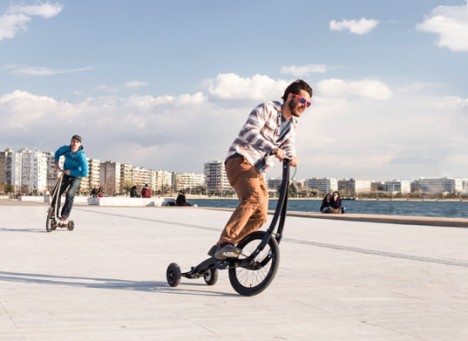
A fresh iteration on a previous prototype, this latest version of the Halfbike, like its predecessor, offers a more compact way to cycle through the city and uses your movements to turn quickly in bike or pedestrian traffic. Handlebars are still a means of support and indirectly a way to pivot, but it is the user’s body weight that makes the motion happen.
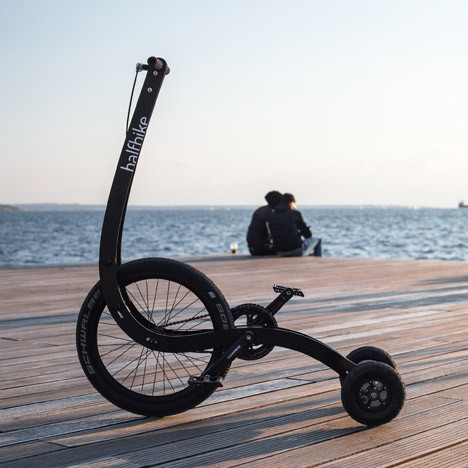
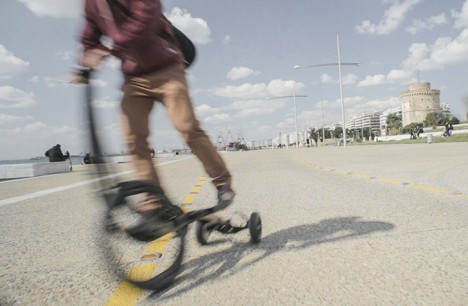
So why Half when you could just Bike (or walk)? “The standing rider position is very close to walking. It allows the rider to control the Halfbike using his or her whole body instead of just the hands like on a bicycle. Furthermore, the spine stays straight and the chest is not constrained between your hands like it is on a bike, which makes using the full capacity of your lungs easier.” It is also great for car trunks that might not have full-bike space.”
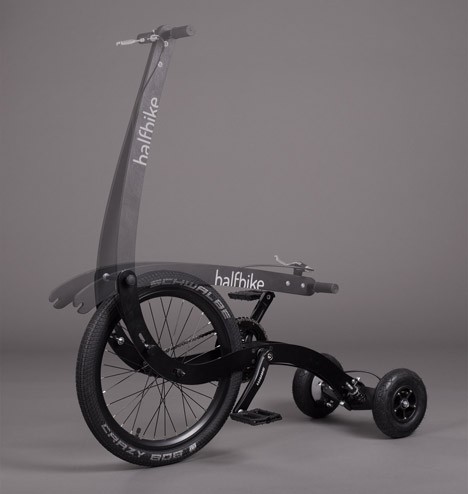

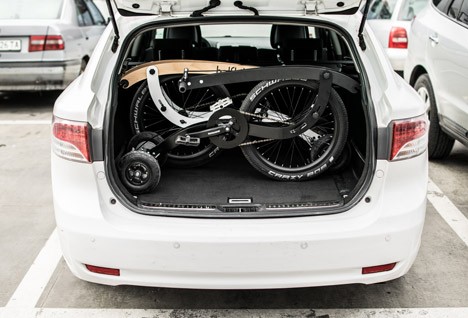
The handlebars fold down to make the entire unit more compact, allowing you to carry it or roll it along easily on its back wheels like luggage. The learning curve is supposedly not too steep and the mode of turning relatively intuitive, but it may still take some time to get a feel for the ride. Each vehicle is hand-built by the company, though presumably this will change if they get sufficient market traction.
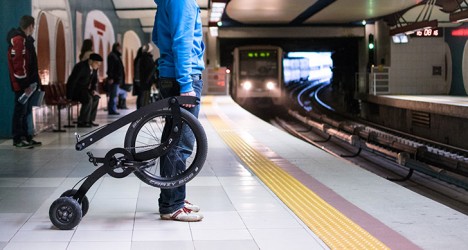
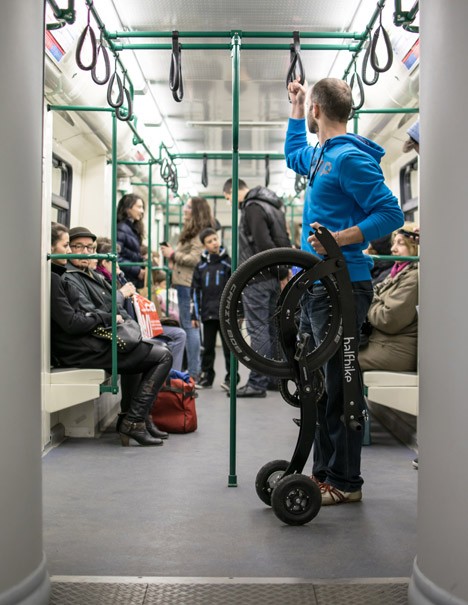
More on the design inspiration and half-biking experience: “We took the core driving mechanism of a classical bicycle (a wheel connected to a crankset) but redesigned pretty much everything else. The result – a vehicle that trains your balance and reflexes in a new way. Not only on a physical level but it also affects the way you perceive movement and enhances your senses. The standing rider position is essential for the Halfbike. It brings you closer to natural walking and it’s the only way to control the vehicle with your whole body and not just your hands. Halfbike is a sort of an extension to the body that allows a smooth and intuitive ride.”

